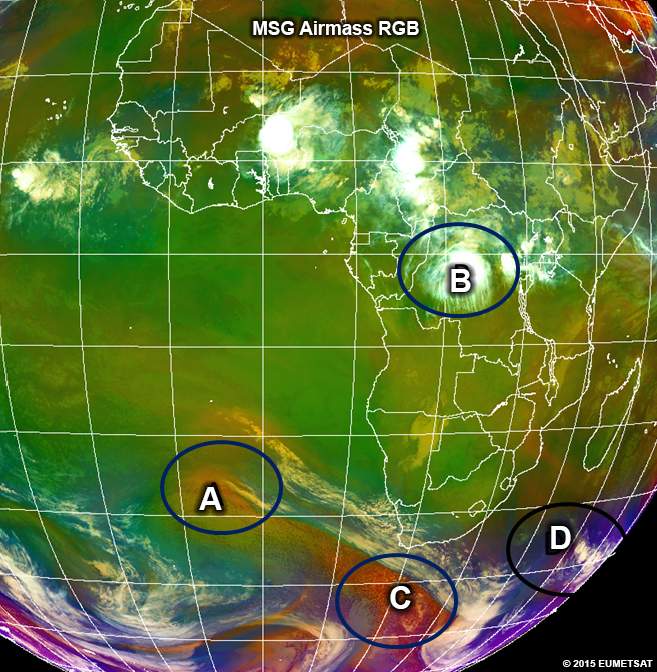Cyclogenesis
Question

Which area may have potential cyclogenesis that’s related to the cold front?
The correct answer is C.
Area C is the most likely area for cyclogenesis to occur. It falls on the western side of the cold front where cold air advection dominates with the south-westerly flow. The cold air cumulus cloud is evidence of this. The red shade from the upper dry stratospheric air is also seen in this region, which introduces cyclonic vorticity. Together with cold air advection, this creates a favourable environment for cyclogenesis to occur.
Area A is incorrect. Although there is some dry stratospheric air descending in the area, there are no signs of any uplift, convergence, or thickening in the low-level and mid-level cloud.
Area B is incorrect because this is an area of deep convection in the tropics. Such systems rely on a barotropic or low wind shear environment.
Area D is incorrect. There is no sign of any upper air vorticity. Plus, there's no cold front in the area to provide the low-level cold air advection.
Cyclogenesis is a very common occurrence over the south Atlantic Ocean and should always be closely monitored. The development of new low pressure systems and associated cold fronts affect existing systems that are in close proximity. The low-level cold air advection associated with the cyclogenesis is needed to sustain the existing cold fronts. Generally, the new development strengthens at the expense of older systems found to the east.
Here are a few things to look for to identify cyclogenesis:
- Thickening of a low-level cloud band
- Development of low-level circulation
- Development of a low pressure system with an associated cold front
Click the Play button to start the animation, then watch the movement and evolution of the system outlined on the first frame.